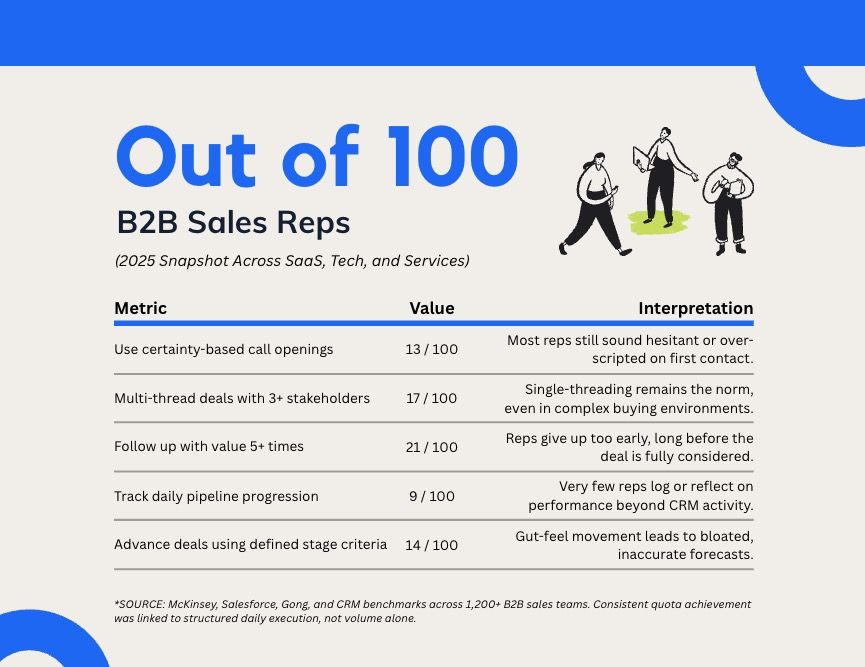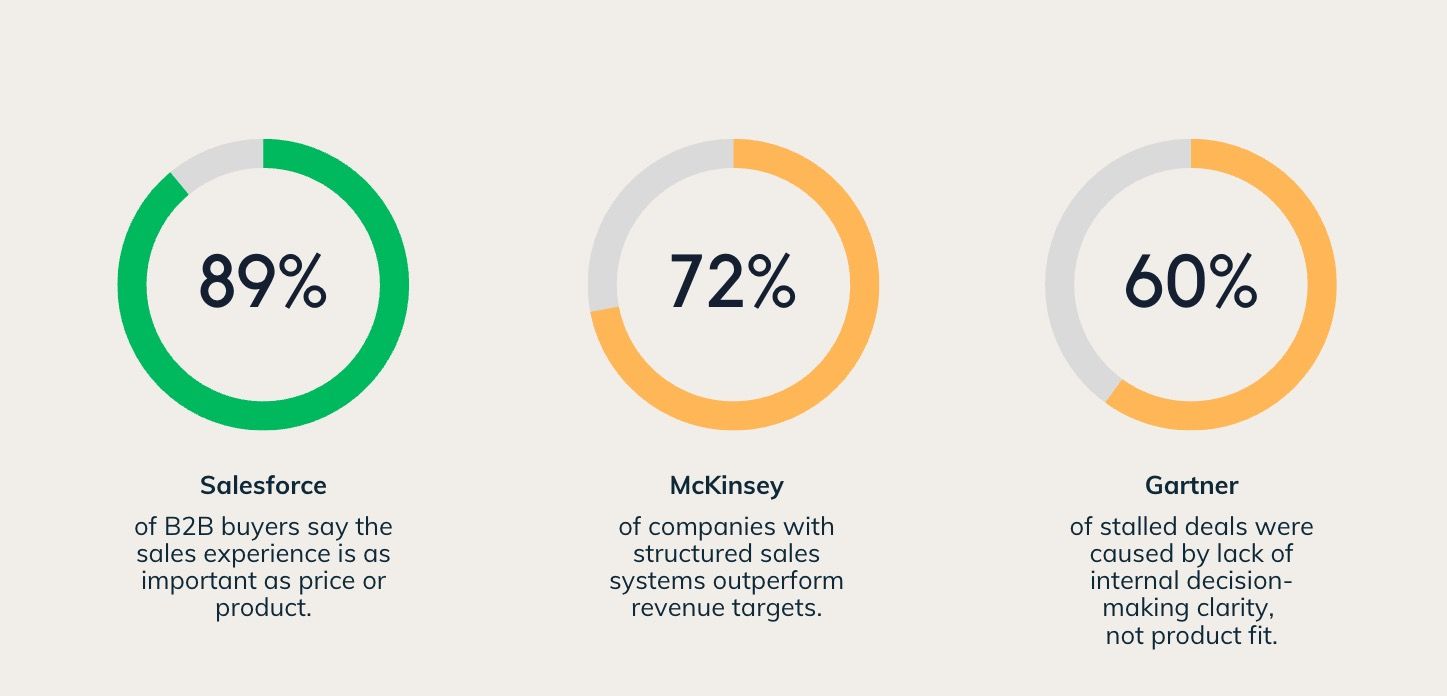📊 What Numbers Say About B2B Sales Performance in 2025



🧱 Where's the problem?
⚠️ Mistake 1: Spraying Outreach in an Intent-Driven Market
📉 The Problem
🔍 The thought process goes like:
✅ Your Recalibrated Approach:
Write your awesome label here.
Are you sales-ready?
Find out in minutes.
Download the Sales Career Readiness Checklist and assess your current strengths.
Get insights and take the right next steps.
Get insights and take the right next steps.
⚠️ Mistake 2: Losing Control in the First 30 Seconds
📉 The Problem
🔍 The thought process goes like:
✅ Your Recalibrated Approach:
⚠️ Mistake 3: No Deal Navigation Strategy (Especially Mid-Funnel)
📉 The Problem
🔍 The thought process goes like:
✅ Your Recalibrated Approach:
⚠️ Mistake 4: Not Initiating Objections Early Enough
📉 The Problem
🔍 The thought process goes like:
✅ Your Recalibrated Approach:
⚠️ Mistake 5: The Follow-Up Still Looks Dated
📉 The Problem
🔍 The thought process goes like:
✅ Your Recalibrated Approach:
Ready to Sell the Rapid Way?
Inside the Desatmos platform, you’ll learn the exact B2B sales systems, scripts, and daily disciplines used to achieve your rapid curve in 2025.
⚠️ Mistake 6: No Defined Exit Criteria Per Deal Stage
📉 The Problem
🔍 The thought process goes like:
✅ Your Recalibrated Approach:
⚠️ Mistake 7: Not Training Daily
📉 The Problem
🔍 The thought process goes like:
✅ Your Recalibrated Approach:
🎯 ARC-1
Rethink Sales. Completely.
Top teams aren’t coaching harder. They’re installing a new performance system built around
daily execution, rapid-cycle learning, and conversion certainty.
daily execution, rapid-cycle learning, and conversion certainty.
FAQ
🚀 Want to Learn B2B Sales the Right Way?
Never miss the news
Stay updated | Stay current | Stay connected
Thank you!

